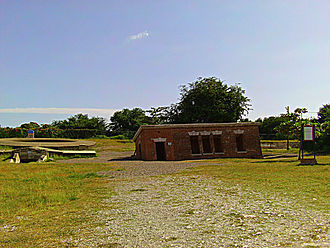Soil liquefaction
Soil liquefaction occurs when a saturated or partially saturated soil substantially loses strength and stiffness in response to an applied stress, such as shaking during an earthquake, in such a way that it behaves like a liquid. The phenomenon is most often observed in sandy soils with a high water table, but it can also occur in other types of soils under specific conditions.
Causes and Mechanism
The primary cause of soil liquefaction is the increase in pore water pressure and the reduction of effective stress in the soil particles, which leads to a temporary or permanent loss of soil strength. This process is typically triggered by ground shaking during an earthquake, rapid loading, or changes in water level. When the soil particles are rearranged or densified, and the water pressure increases, the soil may begin to flow if the stress conditions exceed the soil's ability to support the load.
Effects
The effects of soil liquefaction can be devastating, leading to significant ground deformation, settlement, and damage to buildings and infrastructure. Structures may tilt or sink if the soil beneath them liquefies, and underground pipes and tanks may float to the surface. Liquefaction-induced ground failures include flow slides, lateral spreads, and ground oscillation.
Mitigation and Engineering Considerations
To mitigate the risks associated with soil liquefaction, engineers and geologists assess the potential for liquefaction through site-specific soil investigations and use various ground improvement techniques to increase soil strength and reduce water content. These techniques may include compaction, dewatering, and the addition of chemical stabilizers. Building codes in areas prone to earthquakes often include requirements for assessing liquefaction hazards and designing foundations to withstand potential soil liquefaction.
Historical Examples
Notable examples of soil liquefaction include the 1964 Niigata earthquake in Japan, the 1989 Loma Prieta earthquake in California, and the 2011 Christchurch earthquake in New Zealand. These events highlighted the importance of understanding soil liquefaction in earthquake-prone regions and have led to significant advancements in earthquake engineering and soil mechanics.
Transform your life with W8MD's budget GLP-1 injections from $125.
W8MD offers a medical weight loss program to lose weight in Philadelphia. Our physician-supervised medical weight loss provides:
- Most insurances accepted or discounted self-pay rates. We will obtain insurance prior authorizations if needed.
- Generic GLP1 weight loss injections from $125 for the starting dose.
- Also offer prescription weight loss medications including Phentermine, Qsymia, Diethylpropion, Contrave etc.
NYC weight loss doctor appointments
Start your NYC weight loss journey today at our NYC medical weight loss and Philadelphia medical weight loss clinics.
- Call 718-946-5500 to lose weight in NYC or for medical weight loss in Philadelphia 215-676-2334.
- Tags:NYC medical weight loss, Philadelphia lose weight Zepbound NYC, Budget GLP1 weight loss injections, Wegovy Philadelphia, Wegovy NYC, Philadelphia medical weight loss, Brookly weight loss and Wegovy NYC
|
WikiMD's Wellness Encyclopedia |
| Let Food Be Thy Medicine Medicine Thy Food - Hippocrates |
Medical Disclaimer: WikiMD is not a substitute for professional medical advice. The information on WikiMD is provided as an information resource only, may be incorrect, outdated or misleading, and is not to be used or relied on for any diagnostic or treatment purposes. Please consult your health care provider before making any healthcare decisions or for guidance about a specific medical condition. WikiMD expressly disclaims responsibility, and shall have no liability, for any damages, loss, injury, or liability whatsoever suffered as a result of your reliance on the information contained in this site. By visiting this site you agree to the foregoing terms and conditions, which may from time to time be changed or supplemented by WikiMD. If you do not agree to the foregoing terms and conditions, you should not enter or use this site. See full disclaimer.
Credits:Most images are courtesy of Wikimedia commons, and templates, categories Wikipedia, licensed under CC BY SA or similar.
Contributors: Prab R. Tumpati, MD






